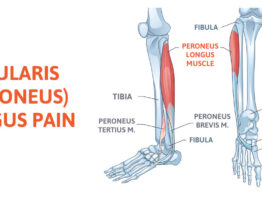
For many diabetics numbness comes on so slowly that they learn to adapt to it. It may be on such a slow gradient that they lose an appreciation for how good a foot with feeling really is, and if ignored for too long amputation becomes inevitable. So why is numbness a silent killer? Because the facts are an amputation will shorten your life.
A numb foot is the most dangerous foot!
Let’s look at two stories of patients with diabetic neuropathy, and how their reactions to this silent killer changed their lives.
1. Patient one- a happy ending:
Patient one came to see me with feet that were killing her with pain. She’d been taking a medication, Lyrica, to help with her diabetic neuropathy, but it barely touched it. She would’ve loved to get off the medication, and be able to sleep better. By this point the burning, tingling pain had become unbearable. She was referred to me by a friend with the understanding that in many cases I had helped patients with their diabetic neuropathy by opening nerve tunnels. On her first visit we reviewed the options and mutually arrived at the decision for surgery. A few months later she returned to the office; life had gotten busy so she’d postponed surgery. Unfortunately, she now showed the beginnings of an ulcer on a toe, and surgery became her number one priority.
I then explained to her how surgery may get rid of her pain, and even get sensation in her foot back, which is why she wasn’t able to feel the development of the callous in the first place. Her infection quickly healed, and then surgery was done.
After surgery her nerve pain was almost immediately resolved, and she was better able to feel the ends of her toes. She said, in her own words, “The foot you operated on feels so much warmer than the other foot.” The ulcer on her toe also rapidly healed. Needless to say within weeks we did surgery on the other foot and leg with the same successful results.
2. Patient two- not as happy an ending:
Numbness was the theme of this diabetic patient’s foot. To this patient it wasn’t that big a deal. He could function fine and could sleep well. Yes, the numbness made walking little more challenging with some difficulty feeling the surface he walked on, but he had learned to adapt. When he showed up he already had a couple toes missing from a recent amputation. His motivation was to reduce the risk of more of the foot being removed, and prevent an amputation on the other foot. We did surgery on the foot that already had two toes missing. To his great pleasure we had the same result as the first patient, a warm foot and returned feeling.
Though our surgery was successful, this story is not as happy as the first in that the patient had already lost a few toes. The end result was a victory, he regained feeling and avoided any further amputation, but if he had come to us first he could possible still have all his toes.
If you are still debating treatment think about this: How good’s an amputated foot?
We are emotional as humans, and pain is a huge motivator to see the doctor, just as in the case of the first patient. For her, pain =motivation=nerve restoration = no amputation = a more active, healthy life.
However, in the case of the second patient, numbness = no motivation= nerve restoration done too late= amputation= less then optimum mobility = major effect on his health and life.
Don’t ignore that numb diabetic foot!
Consider the options from the two contrasting stories. Numbness is riskier than pain for a diabetic, and no one wants surgery. It’s your choice to consider the options. Either have surgery to remove the foot or surgery to restore your nerves and improve the chance of keeping the foot. This is a story that more diabetics need to hear.
Remember, you may not be able to control the need for surgery, but you can control the outcome.










Write a comment: